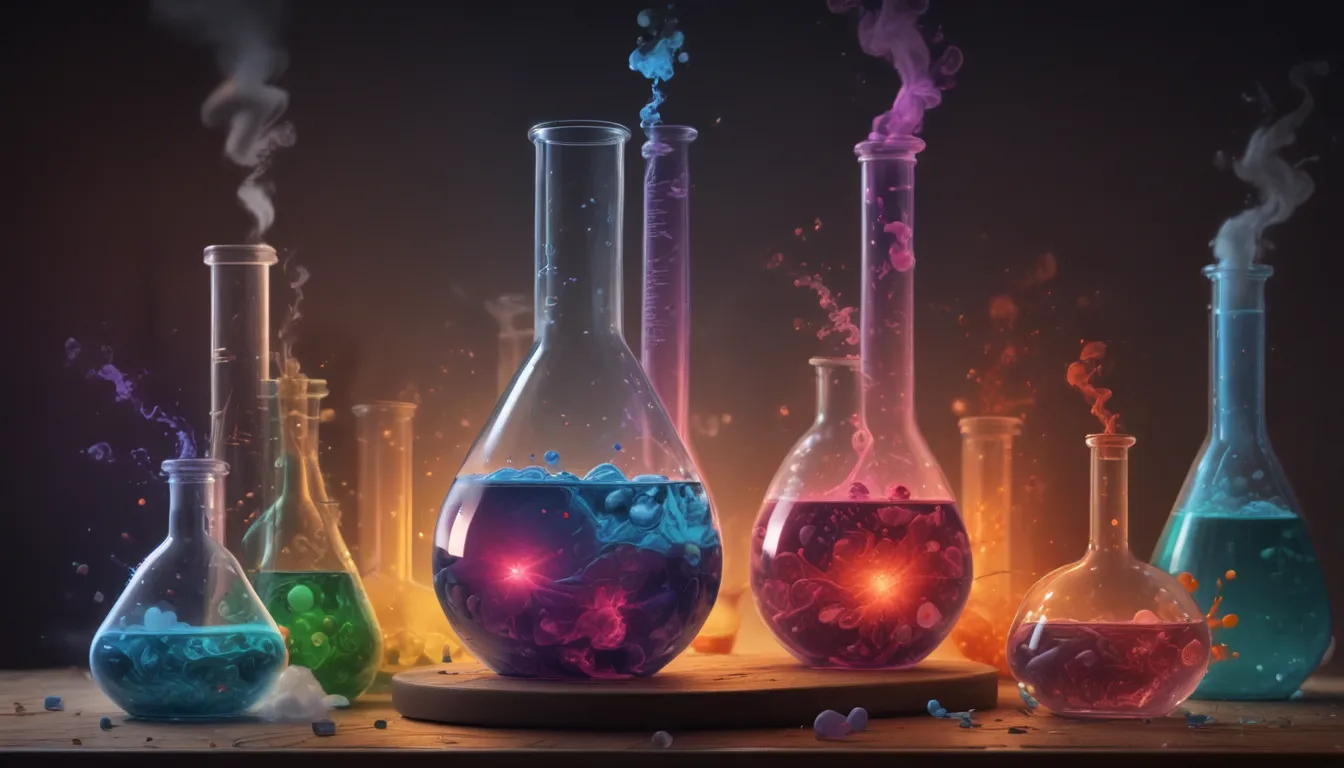A Note About Images: The images used in our articles are for illustration purposes only and may not exactly match the content. They are meant to engage readers, but the text should be relied upon for accurate information.
Are you ready to delve deeply into the captivating world of reaction rates? Buckle up as we explore 20 surprising facts that will not only expand your knowledge of chemistry but also reveal the fascinating intricacies of how reactions occur. From lightning-fast reactions to snail-paced transformations, the realm of reaction rates holds countless surprises that will leave you amazed!
Unraveling the Diversity of Reaction Rates
The speed at which a chemical reaction takes place can vary greatly, from rapid transformations to slow processes that unfold over time. Factors such as temperature, concentration, and catalysts play pivotal roles in influencing the rate at which reactions occur.
Unveiling the Impact of Temperature on Reactions
Higher temperatures typically lead to faster reaction rates by increasing molecular collisions and providing more energy for reactions to take place. This fundamental principle underscores the importance of understanding the role temperature plays in chemical transformations.
The Influence of Concentration on Reaction Rates
The concentration of reactants can significantly impact the rate at which a reaction proceeds. Higher concentrations often result in faster reaction rates, as there are more particles available for collision and transformation.
Catalysts: Agents of Change in Chemical Reactions
Catalysts are substances that can accelerate the rate of a chemical reaction without being consumed in the process. By providing an alternative reaction pathway with lower activation energy, catalysts play a crucial role in expediting reactions.
Unveiling the Role of Surface Area in Reactions
A larger surface area allows for increased contact between reactant particles, leading to faster reaction rates. This phenomenon highlights the importance of surface area in influencing the efficiency of chemical transformations.
The Impact of Pressure on Gas-Phase Reactions
In gas-phase reactions, high pressure can enhance reaction rates by forcing particles closer together and promoting collisions. This aspect underscores the intricate relationship between pressure and the speed at which reactions occur.
Exploring the Significance of Reactant Particle Size
Smaller reactant particles tend to exhibit faster reaction rates due to their higher collision frequencies. This fact emphasizes the importance of understanding the size and properties of reactant particles in predicting reaction outcomes.
Understanding the Influence of the Nature of Reactants
Reactants with stronger bonds or higher activation energies generally exhibit slower reaction rates. This insight underscores the significance of reactant properties in determining the speed at which reactions proceed.
Shedding Light on Photoreactions
Photoreactions refer to chemical transformations that are initiated or affected by light. The presence of light can alter the rate of a reaction, showcasing the diverse ways in which external factors can influence chemical processes.
Embracing the Spontaneity of Some Reactions
Spontaneous reactions occur naturally without any external energy input, resulting in rapid rates of transformation. This phenomenon highlights the spontaneous nature of certain chemical processes.
Measuring Reaction Rates: The Stopwatch Method
A simple and effective way to measure reaction rates is by timing how long it takes for a reaction to reach completion or a specific point. This straightforward approach provides valuable insights into the speed at which reactions occur.
Unraveling the Complexity of Multistep Reactions
Complex reactions often unfold in multiple steps, each with its rate-determining factor. Understanding the sequential nature of these reactions can shed light on the intricate mechanisms underlying chemical transformations.
The Influence of a Magnetic Field on Reactions
Magnetoreactions are reactions that are influenced by the presence of a magnetic field, impacting the rate at which they occur. This intriguing phenomenon underscores the interplay between magnetic fields and chemical reactions.
Exploring the Impact of pH on Reaction Rates
Changes in pH can affect the ionization of reactants and alter reaction rates, particularly in acid-base reactions. This aspect highlights the role of pH in modulating the speed at which reactions proceed.
Enhancing Reaction Rates Through Mixing
Stirring or agitating reactants can enhance reaction rates by increasing the likelihood of collisions between particles. This simple yet effective method underscores the importance of mixing in promoting efficient chemical transformations.
Understanding the Influence of Impurities on Reactions
Impurities in reactants can either hinder or facilitate reactions, depending on their chemical properties and interactions. This factor highlights the importance of purity in controlling and manipulating reaction rates.
Catalyzing Reactions for Faster Transformations
Enzymes and other catalysts can significantly increase reaction rates by providing alternative reaction pathways with lower activation energies. The presence of catalysts showcases the transformative power of these agents in expediting chemical reactions.
Harnessing Pressure for Faster Gas-Phase Reactions
Increasing the pressure of reactants in gas-phase reactions can lead to a higher collision frequency and, consequently, a faster reaction rate. This insight underscores the role of pressure in modulating reaction kinetics.
Solvents: Influencing Reaction Rates in Solution-Phase Reactions
In solution-phase reactions, the nature and properties of the solvent can impact the reaction rate by influencing the solubility and mobility of reactants. Understanding the role of solvents in reactions provides valuable insights into reaction kinetics.
Optimizing Reaction Rates Through Catalyst Concentration
The concentration of catalysts can have a significant impact on reaction rates, with higher concentrations often resulting in faster reactions. This aspect underscores the importance of catalyst concentrations in controlling reaction kinetics.
Conclusion: Unveiling the Intricacies of Reaction Rates
In conclusion, understanding reaction rates is essential in the field of chemistry. By delving into the surprising facts about reaction rates, we can unravel the intricate mechanisms underlying chemical transformations and their profound impact on various industries. From pharmaceuticals to materials science, the study of reaction rates is crucial in shaping our understanding of the world around us.
FAQs: Exploring Common Questions About Reaction Rates
- What is reaction rate, and how is it measured?
- What factors influence reaction rates?
- How does temperature affect reaction rates?
- What role do catalysts play in reactions?
- Can reaction rates be modified, and how?
- What are some real-life examples of reaction rates in action?
Embark on a journey through the captivating world of reaction rates and uncover the surprising truths that lie within these essential concepts. By expanding your knowledge of chemistry and embracing the complexities of reaction kinetics, you can gain a deeper appreciation for the dynamic nature of chemical processes. Join us on this enlightening exploration of reaction rates and unlock the secrets that shape the world of chemistry.






